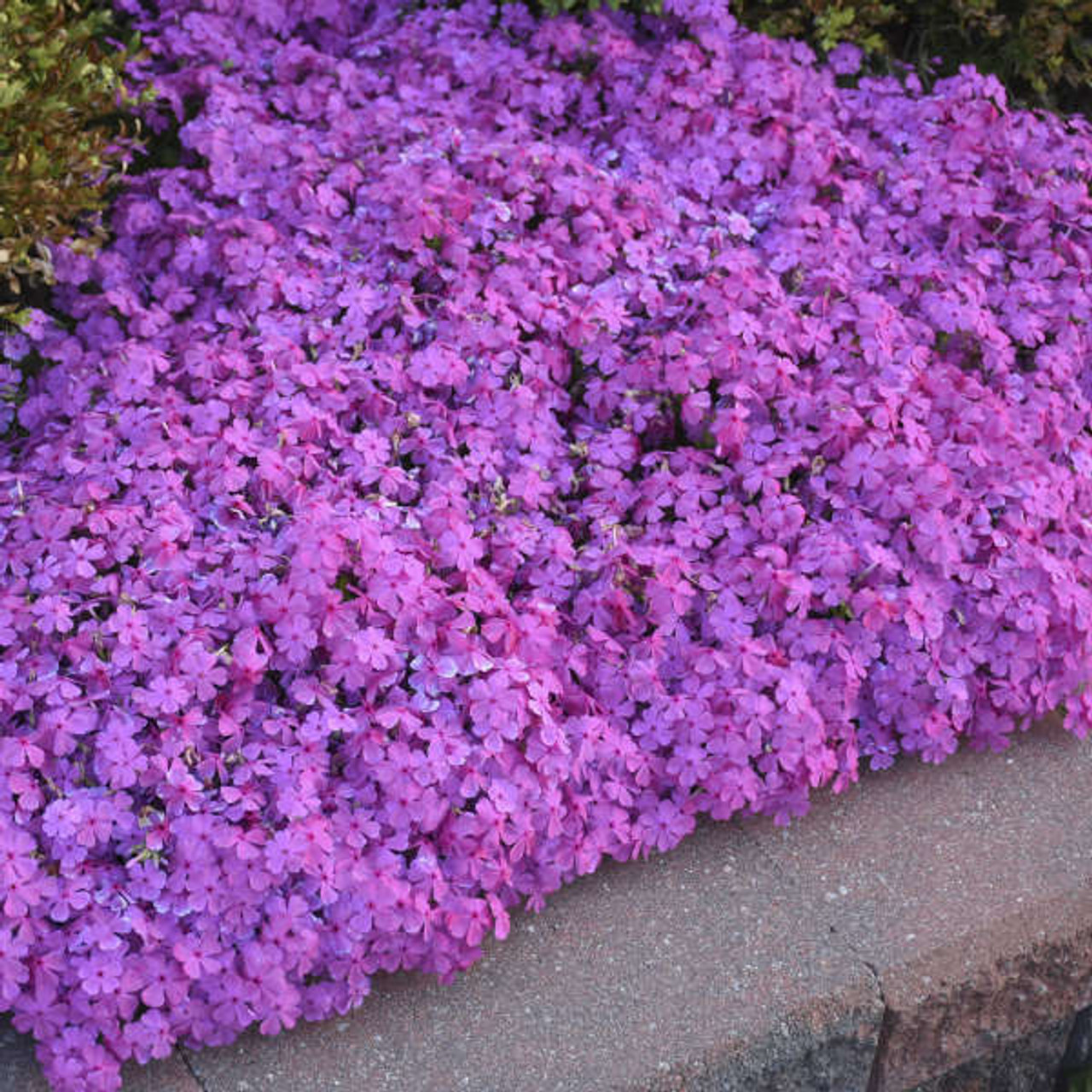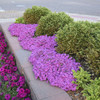Product Description
Phlox subulata 'Drummond's Pink' (25) Bare Root Plants
Common Name: Creeping Phlox
This creeping Phlox has a richer rose color and larger flowers than 'Emerald Pink'.
Creeping Phlox is a low-growing species which forms a carpet-like mat no taller than 6". This popular little perennial is best utilized in rocky areas, on slopes, and in flower borders.
Creeping Phlox is a versatile, easy to grow groundcover for full sun. Gritty, neutral soils are prefered and good drainage is essential. It's a good idea to shear this plant back and clean up any dead foliage in early summer, just after it's finished blooming. This will produce denser foliage and will encourage it to rebloom. Divisions can be made every few years in summer.
Height: 4.0-6.0 Inches
Spread: 18.0-20.0 Inches
Hardiness Zones: 2,3,4,5,6,7,8,9
Flower Color: Pink shades
Foliage Color: Green shades
Full Sun (> 6 hrs. Direct Sun)
Low to Average Water Needs
Average to Fertile Soil Quality
Bloomtime: Mid Spring
Attracts Butterflies
Bee Friendly
Evergreen
Growth Rate: Medium
Border Plant, Easy To Grow, Edging, Ground Cover, Mass Planting, Salt Tolerant, Native to North America
Phlox subulata 'Drummond's Pink', also known as Creeping Phlox or Moss Pink, is a charming ground-hugging perennial that heralds the arrival of spring with a profusion of vibrant pink blooms. This delightful plant forms a dense, mat-like carpet of evergreen foliage, which becomes completely smothered in a sea of small, star-shaped flowers in mid-spring. The cheerful pink blossoms create a stunning display of color, transforming any garden into a picturesque landscape.
'Drummond's Pink' is a low-maintenance plant that is incredibly easy to grow, making it a perfect choice for both novice and experienced gardeners. It is drought-tolerant once established and thrives in full sun, making it an ideal candidate for sunny slopes, rock gardens, and borders. This hardy plant is also deer-resistant, so you do not have to worry about them munching on your precious blooms.
This versatile groundcover can be used in a multitude of ways. Its spreading habit makes it an excellent choice for filling in bare patches, creating a lush carpet of color. It also looks fantastic cascading over walls or spilling out of containers, adding a touch of whimsy to any space. And if you are looking to attract pollinators to your garden, 'Drummond's Pink' is a magnet for bees and butterflies.
Here are some key points to remember when growing Phlox subulata 'Drummond's Pink':
- Sunlight: Prefers full sun (at least 6 hours of direct sunlight daily) for best flowering.
- Soil: Thrives in well-drained soil. Amend heavy clay or poorly draining soils with sand or gravel.
- Watering: Water deeply and infrequently, allowing the soil to dry out slightly between waterings. Avoid overwatering, as this can lead to root rot. 1
- Maintenance: Minimal maintenance is required. Shear back lightly after flowering to encourage a denser habit and potential reblooming.
If you are looking for a low-maintenance, visually appealing plant to add some pizzazz to your garden, Phlox subulata 'Drummond's Pink' is an excellent choice. Its vibrant foliage, cheerful flowers, and easy-going nature make it a winner for gardeners of all skill levels. Whether you are a seasoned pro or just starting out, 'Drummond's Pink' is sure to bring a smile to your face and a touch of magic to your garden.
Other Details
The most important part of the plant is its root system. Healthy roots are the foundation of a healthy, vibrant plant. The type of plug container used is based on the specific needs of the plants. Perennials offered as bare root traditionally perform better when planted as bare root.Planted in a specialized mix, potted plants have well established root systems. Top growth stage will vary depending on the current life cycle and time of year when shipped. In Winter and early Spring dormant plants may be shipped. Dormant plants may be planted right away, even before the last frost date.
Most bare root varieties are field grown for at least one season, though Hemerocallis and Hosta are grown for two seasons. The bulk of the soil is removed during the harvesting process and the tops of most varieties are trimmed back to the crown. They are graded, packed in shredded aspen or sphagnum moss and stored in freezers until ready to be shipped.
See our Container Sizes and Bare Root Perennials pages for more information.
Plant information and care is provided in the Overview section, Plant Genus Page and general information is provided in the Planting Care & Guides. Additional questions can be asked on each Plant page.
Plant Spacing: Using the maximum mature spread or width of a plant to guide spacing, ensures space to grow to full size. To fill an area sooner, plant them closer together. Just remember, future thinning or transplanting may be needed.
Water: Keep a close eye on newly planted perennials, especially throughout the first growing year. Most early plant loss is due to too much or too little water!













